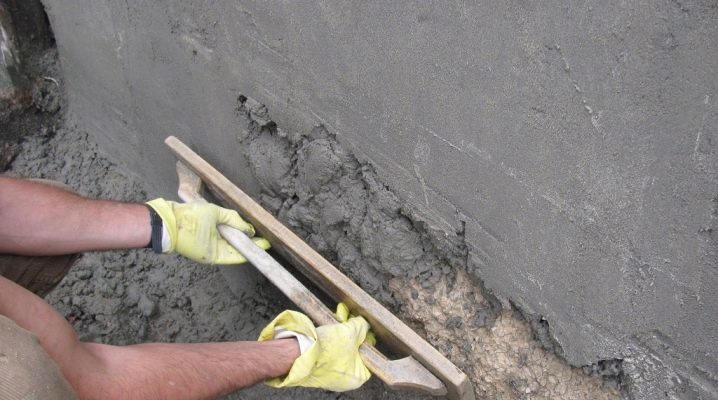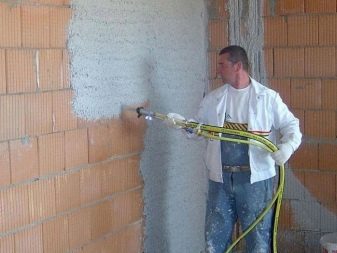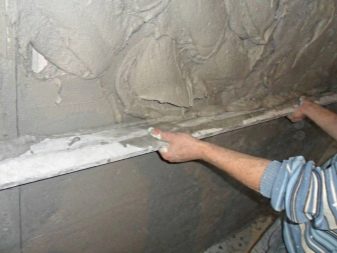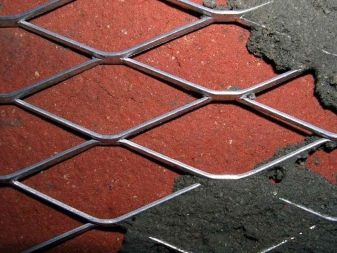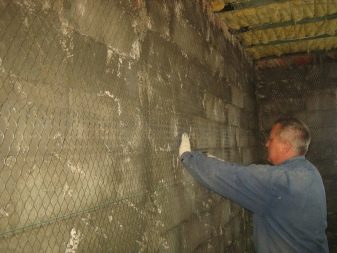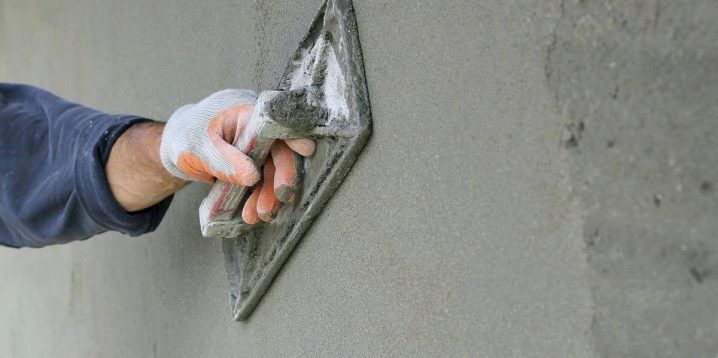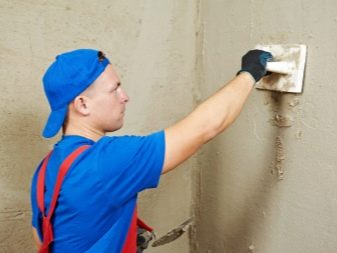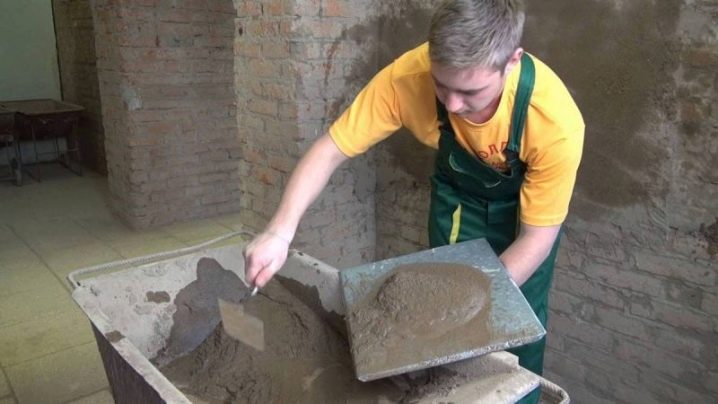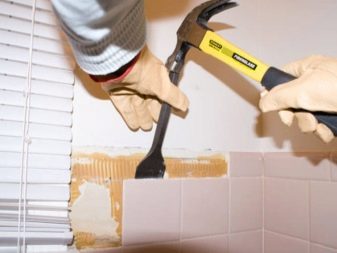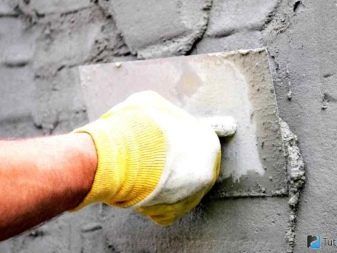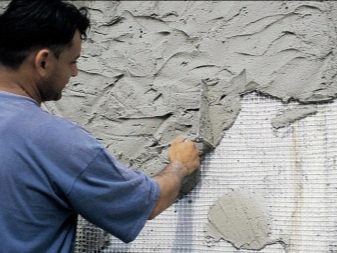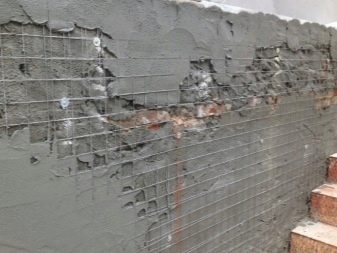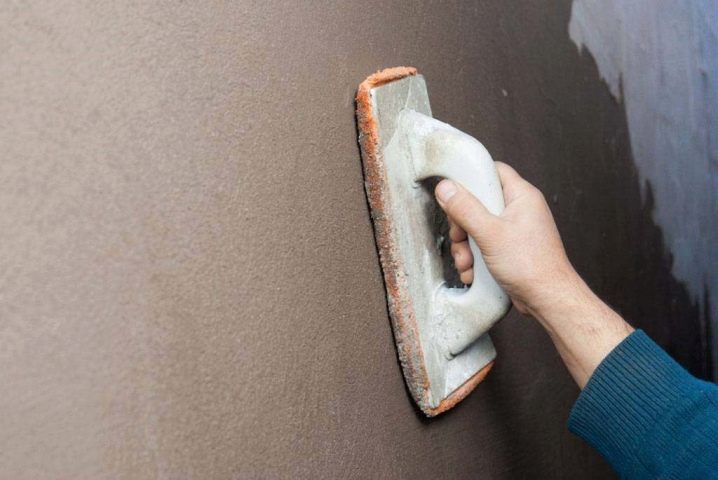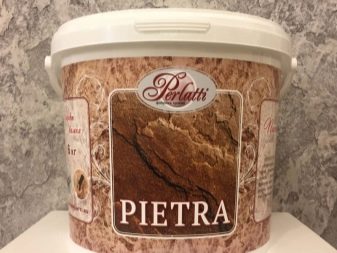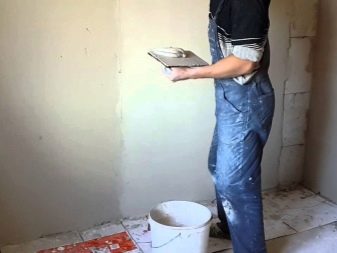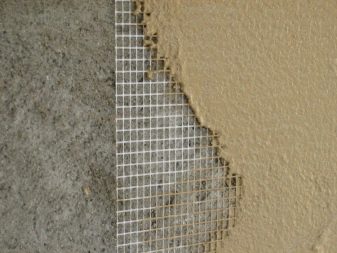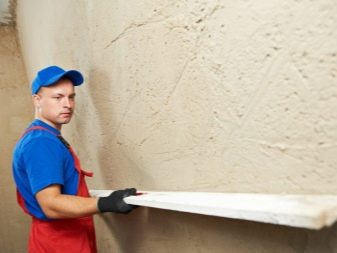How to plaster the walls with cement mortar?
Leveling walls with cement mortar is the most common way to finish surfaces in homes. Today, many want to learn to plaster their own hands. But for this you need to consider how the solution is made, as well as understand the principles of its application to different surfaces.
Special features
Cement stucco is itself a heavy material. If the layer applied to the walls is too thick and their preparation for work is incorrect, then the cement mortar may not hold onto the walls. To avoid this, you need to prepare the walls for decoration. There are many ways to prepare them.
The most common method is with a metal grid. It can be found in any hardware store, and it costs a penny.Special metal mesh is attached with dowels to the brickwork. It not only helps to keep the solution on the wall, but also prevents the cracking of the plaster.
If you want to save, then instead of the lattice, you can use a wire that is wound on nails hammered between bricks. However, this process will take more time.
In the case of a concrete wall, it is enough to scratch it a little, and then the mortar will hold onto them well. For cinder block or shell rock preparation is not needed at all. It is enough to moisten such surfaces with water so that they do not take moisture from the solution. Wait for their drying is not worth it.
How to prepare a solution?
When everything is ready for plastering the walls, you can start preparing the mortar. Of course, it is much easier to purchase ready-made dry mixes based on cement or with the addition of plaster, lime or cement plaster.
Enough to fill them with water. You should not experiment with the amount of liquid - the proportions will be shown on the package. But if a lot of work is planned, then it will be more economical to make a solution with your own hands. It will not be difficult to prepare it, it is important that proportions are respected.
The composition of the solution includes only three components - it is sand, cement and water. First you need to choose cement, because the composition of the solution depends on what kind of brand it is. Cement is M400 and M500, which means the ratio of cement and sand: M400 - one to four, and M500 - one to five. Then you need to carefully sift the sand so that there is no debris in it. It should be without clay inclusions, since the clay absorbs moisture more, causing visible cracks and other damage to appear on the surface of the walls.
The next step is to mix the dry materials in the mixer and add the necessary amount of water to the solution. It is necessary to dilute the sand-cement mortar to such a consistency that it kept its shape, but at the same time it was well rubbed on the surface of the wall. You can also add liquid soap to the plaster was more mobile. One spoon of liquid is enough for a bucket of solution.
When preparing the solution, it is necessary to adhere to the proportions, otherwise the mixture will turn out to be too “fat” This means that there is too much cement in the solution. Such a coating will be durable, but even a slight shrinkage will cause cracks.
However, the second extreme is also bad.If the solution is too "skinny", this is also not good. This characteristic describes a composition in which there is too much sand and not enough cement. This kind of savings as a result will still come out sideways: the solution will turn out too weak, and the walls will quickly be covered with bald spots.
Consumption rate per 1 m2
Starting to plaster the walls, it is necessary to calculate the amount of mortar, because the finished mixture thickens very quickly. Many factors affect the consumption of plaster per 1 m2. The main ones are the quality of the walls and a kind of plaster. Also, the prepared solution hardens very quickly, so you need to count the amount of the mixture. This will save money and increase the productivity of wall finishing.
If the walls are smooth, the plaster layer will be minimal.but, on the contrary, if there are cracks or cavities, the flow rate of the solution will increase. After all, very often masters use plaster in order to solve serious problems in the repair process - to seal up the gaps, to hide a network of cracks, or simply to level the walls. A good solution is able to cope with all these tasks.
When finishing the walls on 1m2 dry plaster will need two to three times less than from cement.The thickness of the layer, if the surface is uneven, is one centimeter, and the consumption of the solution is approximately eight to nine kg. When the wall is without flaws, the layer can be reduced to 0.5 cm, respectively, the flow will also fall by half.
When finishing cement mortar plaster consumption is two times more than when using plaster, approximately 16-17 kg. The composition of this solution is only sand and cement. It is also not worth saving on it - you need to take the material of the brand M400. Then the ratio of materials will be 4 kg of cement and 13 kg of sand.
To reduce the consumption of the solution, it is necessary to prepare the base.
Log walls or walls of wooden beams, as well as of concrete must be treated with a primer in two layers. The maximum consumption will be when plastering walls of cinder block, as the walls of this type are very uneven.
Special attention deserve unusual coverage. Before applying a layer of plaster, the previous one is usually removed. For example, if the walls were previously decorated with pebbles or tiles, they should be cleaned with special tools. Minimal processing require walls of foam concrete or surface, decorated with foam.
Application process
To date, many prefer to shift the responsibility for the repair of a house or apartment to the workers. Including plaster walls. But this process is not really as time consuming and time consuming as it seems.
The work is quite monotonous. Cement mortar can be thrown on the walls with a spatula or trowel. It is thrown at an angle of forty-five degrees from the bottom up until the moment when the layer does not cover the height of the beacons. Then the surface is aligned with the rule. To do this, you need to put it on two lighthouses and stretch the cement plaster, moving up and down in zigzag waves. Thus, the solution falls more evenly and fits tightly to the wall.
Excess solution is removed back into the dough mix. The surface of the walls must be neat and without any visible irregularities or plaster exits beyond the edges. If there are some irregularities, they are thrown with a small amount of the mixture and once again align with the rule. This continues up to the ceiling, and only then can we move on to the next level, which is located between the lighthouses.
When it is necessary that the thickness of the solution is greater, then all processes are repeated more than once. For example, if the walls are cobbled or tiled.The technology in this case is this: the first layer of plaster is applied, then it dries, and only then the next layer is applied.
If the layer is too thick, it can simply slide. To avoid this, it is necessary to use a metal grid that will not allow the solution to do this.
After the solution is dry, you can proceed to the final stage of wall finishing, which is the grouting of the surface. Grouting mechanically does not take much time, and everything can be done by hand. To do this, knead the same solution as on the plaster, while its consistency should be slightly thin. This mixture must be applied to the wall and with the help of a half-liner to quickly grind to obtain a smooth surface.
Tips
The advice of experienced specialists always helps novice masters who work with plaster for the first time. There are no difficulties, but still there are moments that put a layman to a standstill.
The main question with which the owners seek help from more experienced friends is how to choose plaster for work. There are four main types of this material.
They all have different characteristics and are used for different purposes:
- Facade. This material is intended for outdoor use. Facade plaster is used on the street for finishing garages or sheds, as well as for insulating corners in houses. With it, as a rule, the least hassle, but for a house you still shouldn't buy it.
- Rough. This type of plaster is used to treat uneven walls or walls with large grooves. It is believed that this layer is applied in front of an additional, changing the appearance of the wall. This approach will significantly save money when buying putty, because rough plaster is cheaper. And under a layer of putty and beautiful wallpaper all the flaws of this material will not be visible at all.
- High quality. Unlike the previous one, high-quality putty is no longer covered. Processing walls with such material is the final stage. Such plaster is used already before pasting the wallpaper or before laying the tile. However, she has a kind of minus - she is unable to cope with serious cracks, cracks or other irregularities.
- High quality. This is the most expensive type of plaster.The walls after such treatment are smooth and even. For the preparation of walls for painting using mainly high-quality plaster. But for other tasks, it is not very suitable.
The next point that many people care about is the work with plaster walls. Here, in fact, there are no special subtleties. The main point, which in no case should not be forgotten in order to avoid the appearance of irregularities on the walls - they must be perfectly smooth and clean.
Before finishing, you must remove all unnecessary. Then it is important to clean the surface from dirt, and also to treat it with a primer, which should be applied with a not very thin layer.
Another useful tip is that you should not carry out repairs at too high or too low temperatures. Both heat and cold are equally detrimental to stiffening plaster. Walls crafted in this weather crack much faster. Therefore, it is better to wait for the right moment.
There is another way to extend the life of repair, in addition to choosing the ideal conditions for its implementation. In order for the mortar to last longer and there are no cracks when the plaster dries,it is necessary to install steel or polypropylene mesh on the walls using dowels. If done correctly, it will make the walls more durable.
Plastering the walls with your own hands, as practice shows, is not a very complicated process. Having understood the subtleties of the work and finding the material that is suitable for the realization of a particular idea, you can do a good repair with your own hands, or at least prepare the walls for further work carried out by the craftsmen.
How to plaster the walls with cement mortar, see the following video.
